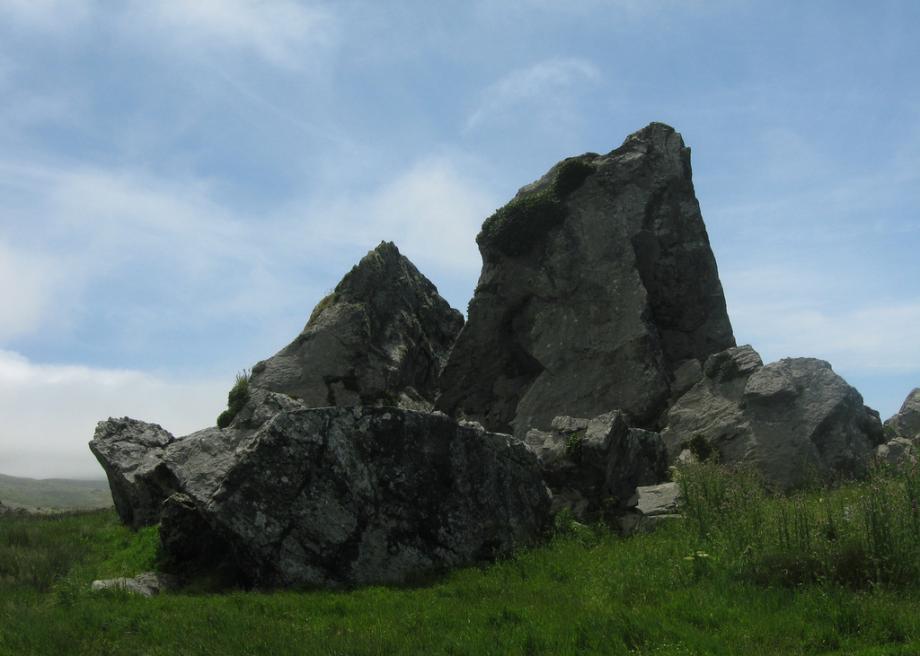Atlas Obscura on Slate is a blog about the world’s hidden wonders. Like us on Facebook and Tumblr, or follow us on Twitter.
Finding clues to the prehistoric past doesn’t always entail digging. In the case of the mammoth rubbing rocks near Jenner, California, it’s best to look up.
The atypically smooth, shiny patches on these blueschist rocks in Sonoma County are isolated at between 10 and 14 feet off the ground, appropriate shoulder height for an adult Columbian mammoth (Mammuthus columbi). The buffed spots on these stones are too methodical to be the result of natural forces and feature the same tiny gravel scratches as modern African elephant rubbing rocks. As a result, scientists have concluded that this area was once part of an extended mammoth territory, and (like modern day elephants and bison) the mammoths groomed themselves by covering their bodies in mud and then scratching it away by rubbing against the massive boulders.
The presence of mammoths in this neck of the woods makes sense. Columbian mammoths wandered the San Francisco Bay area for many thousands of years. The stones are located in a vast prairie that was once even more sprawling and are surrounding what may once have been an ancient watering hole. On a flat, gusty landscape like this one, the stones would have been valuable to mammoths not only as scratching posts but also as protection from the wind.
Today, the rocks are mostly valuable to climbers, who clamber along their more jagged sides to get as close as we smaller animals can get to a mammoth’s-eye point of view.
Submitted by Atlas Obscura contributor kevnielsen.
For more on the mammoth rubbing rocks, visit Atlas Obscura!
More wonders to explore:
